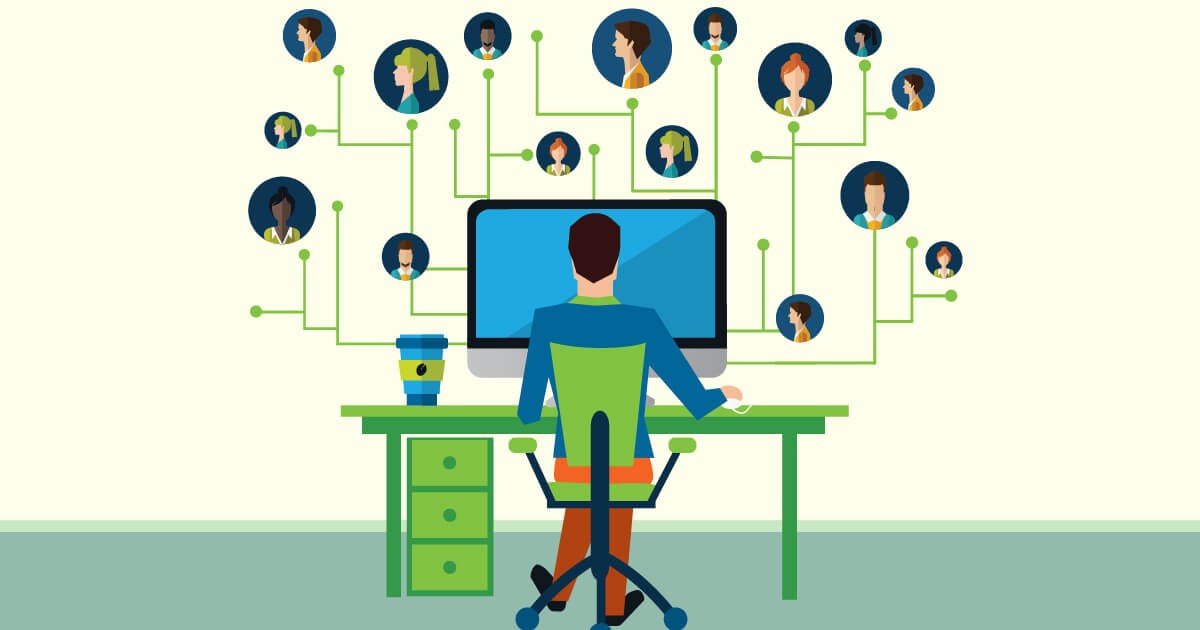The way we work has changed a lot in recent years, and with that, the way we recognize and appreciate our teams has evolved too. Technology is playing a huge role in reshaping how we celebrate achievements, big or small, within our organizations. What used to be limited to a yearly award ceremony or a manager’s occasional “good job” has now become a much more dynamic, immediate, and personal experience. The tools and platforms we use today enable real-time recognition, peer-to-peer shout-outs, and even personalized, data-driven feedback. In short, technology is turning recognition from a rare event into a constant, meaningful part of our work culture.
Moving Beyond the Traditional
In the past, recognition often followed a top-down, formal process. Maybe you’d get a pat on the back from your boss after a successful project or a “thank you” during an annual meeting. While those moments are important, they can sometimes feel detached from the everyday work that happens behind the scenes. Recognition used to be something that happened in rare, set moments, but today, technology allows us to recognize team members in real-time, making it more relevant and immediate.
Platforms like Slack, Microsoft Teams, and project management tools like Asana have made it easier than ever for colleagues to give each other recognition in the moment. Now, someone can send a quick thank-you or give a shout-out within a chat thread or project board, which helps to create a more continuous flow of acknowledgment. Instead of waiting for quarterly reviews or big annual events, recognition can happen every day, making employees feel appreciated and seen more frequently.
Real-Time, Instant Gratitude
Perhaps the most powerful impact of technology on recognition is the ability to offer real-time feedback. No longer do employees have to wait for monthly or quarterly review cycles to hear how they’re doing. With the click of a button, team members can send praise to one another for contributions, whether it’s solving a tricky problem or simply being a great teammate.
In tools like Slack, for example, features like “Kudos” or “Appreciation” allow peers to recognize each other instantly. When someone helps solve a tough issue or delivers an outstanding presentation, a quick message or emoji can go a long way in making them feel valued. These smaller, more frequent recognitions add up, creating a culture of positive reinforcement that encourages continuous improvement. They also help employees feel like their day-to-day contributions matter, which boosts overall morale and engagement.
Empowering Peer-to-Peer Recognition
Historically, recognition came from managers or leaders at the top, but tech is leveling the playing field. With digital tools, employees now have the power to recognize their peers. This shift is crucial for building a culture where everyone’s contributions, no matter their role, are celebrated.
Platforms like Bonusly, Kazoo, and Recognize enable employees to give each other points, tokens, or even rewards. These points accumulate over time, offering employees a chance to redeem them for things like gift cards or even extra time off. Peer-to-peer recognition not only boosts morale but also fosters camaraderie and collaboration. It reinforces the idea that everyone’s work is important, regardless of position or title, and helps create a sense of unity within teams.
This kind of recognition also builds a more inclusive workplace. When recognition comes from peers, it can help break down the traditional hierarchical barriers that sometimes make employees feel disconnected from leadership. It shifts the focus from being “seen by the boss” to being “seen by your team,” which can have a powerful impact on how employees feel about their place within the organization.
Personalization Is Key
With the help of technology, recognition has become more tailored and personalized. Gone are the days when “Employee of the Month” meant the same thing for everyone. Now, recognition can be tailored to an employee’s preferences and strengths, making it feel more meaningful.
Tech tools collect data on employee performance and preferences, which helps companies recognize their team members in ways that resonate with them. For example, some people prefer public acknowledgment, while others might appreciate a quiet thank-you or a more tangible reward, such as employee gift cards. Through AI and data analytics, platforms can track these preferences, allowing recognition to be more intentional and fitting to each person’s unique style.
This personalization also extends to the rewards employees receive. Instead of a generic gift card or a trophy, employees can choose rewards that suit their needs or interests, whether that’s a spa day, professional development courses, or a charitable donation in their name. By aligning recognition with personal values, technology helps make the gesture feel more thoughtful and relevant.
The Power of Gamification
Another way tech is changing the recognition game is through gamification. Turning recognition into a game-like experience has become a popular way to motivate employees and keep them engaged. Tools like BambooHR, Zest, and Kudos have incorporated elements of gamification, such as points, badges, and leaderboards, to celebrate achievements and encourage friendly competition.
This approach taps into the human love of challenges and rewards. When employees earn points or badges for reaching milestones or completing tasks, it gives them a sense of accomplishment that goes beyond just meeting a goal. These elements create a fun and motivating atmosphere, turning recognition into something more interactive. Employees can track their progress, see where they stand among their peers, and even earn rewards based on their efforts.
Gamification also encourages consistent behavior. When recognition is tied to achieving certain goals or completing challenges, employees are more likely to stay engaged and focused on performance. Over time, this leads to a more motivated workforce and an environment where employees feel they are continuously growing and being appreciated.
Celebrating Milestones with Ease
Tech makes it easier to celebrate milestones, both professional and personal. Recognizing anniversaries, birthdays, or life events like a wedding or the birth of a child helps employees feel valued not just for their work but for who they are as people. Technology allows these milestones to be tracked and celebrated seamlessly, even across different time zones or locations.
Platforms like Workhuman and Achievers provide tools that help managers keep track of anniversaries and other special occasions. The system sends reminders, so no important moment is overlooked. A simple “happy birthday” or “congratulations on your 5-year anniversary” can make employees feel appreciated and part of a larger community, even if they’re working remotely or in a different office.
These moments of celebration help create a more supportive and connected work culture. When employees feel that their personal milestones are recognized, they develop a stronger emotional connection to the company and their team, which ultimately leads to greater loyalty and satisfaction.
Data-Driven Insights for Better Recognition
One of the most exciting aspects of tech-driven recognition is the ability to use data to make recognition more effective. By tracking participation rates, engagement, and feedback, companies can get a clearer picture of how their recognition programs are working — and where they can improve.
For example, if a certain employee hasn’t received recognition in a while, the system might flag this to managers or leaders, prompting them to reach out. Data can also reveal trends, such as whether certain teams or individuals tend to get more recognition, ensuring that acknowledgment is distributed fairly. These insights can help leaders adjust their recognition strategies to make them more inclusive and aligned with company goals.
Technology also allows organizations to measure the impact of recognition on employee engagement, satisfaction, and performance. By understanding how recognition directly affects productivity or retention, companies can fine-tune their approach to maximize its effectiveness.
Conclusion
Technology has brought about a profound shift in how we recognize our teams, making the process more real-time, personalized, and data driven. From instant feedback and peer-to-peer recognition to gamification and data insights, tech is transforming the traditional approach to recognition into something more dynamic and impactful. Employees today are looking for meaningful acknowledgment, not just a generic “thank you.” And with the help of technology, businesses can deliver just that. By embracing these tools, organizations can create a culture of continuous recognition that motivates teams, fosters engagement, and ultimately leads to a more productive and satisfied workforce.





